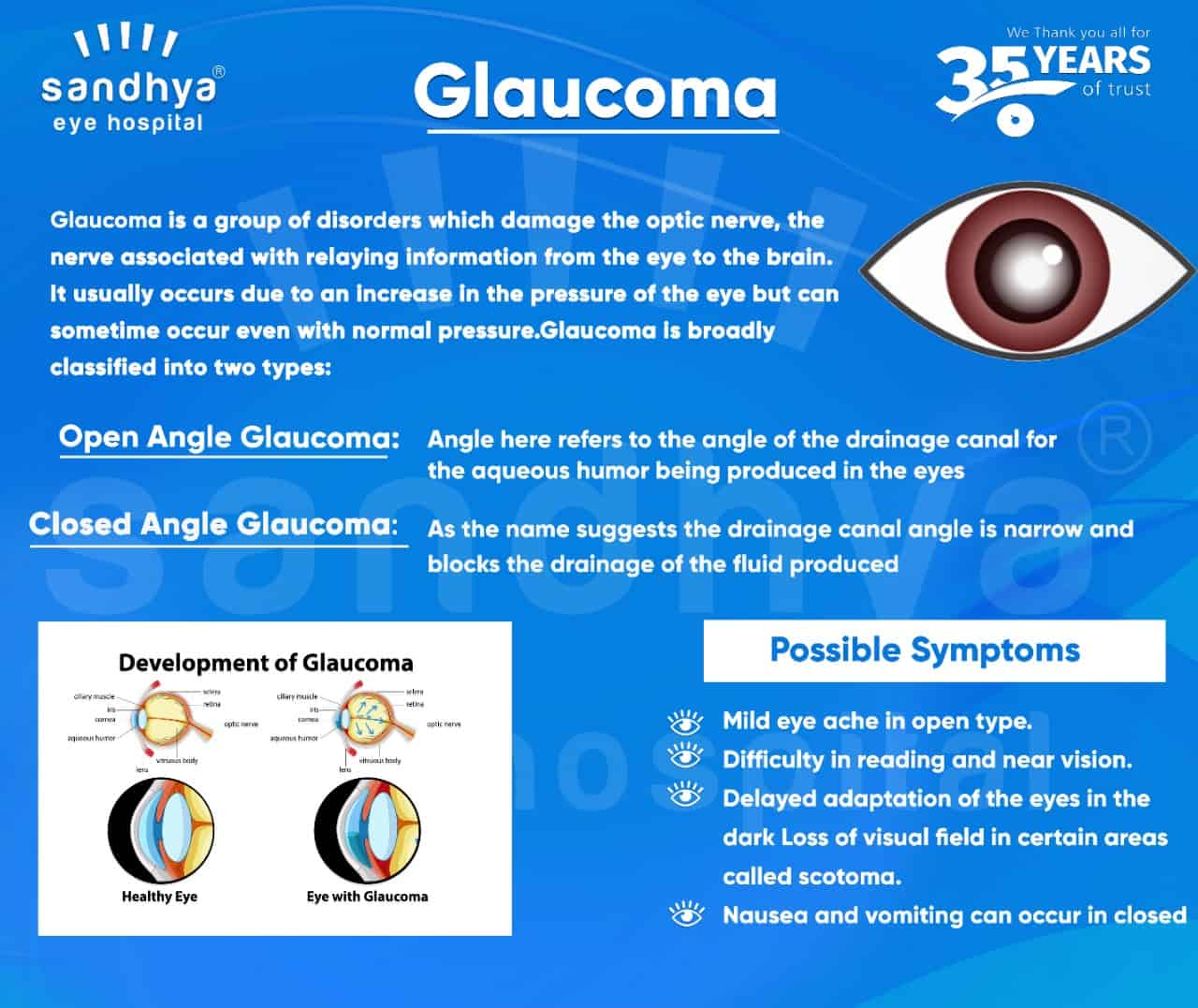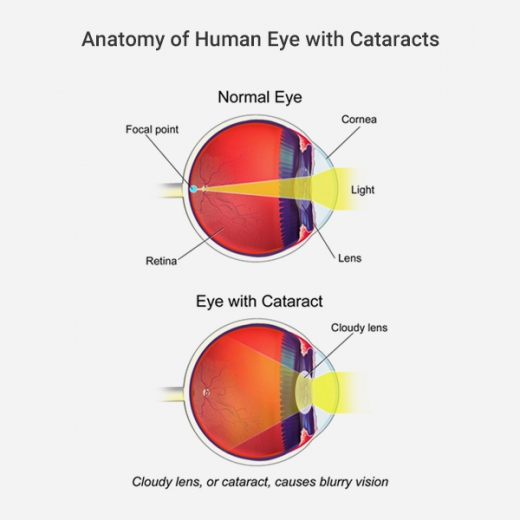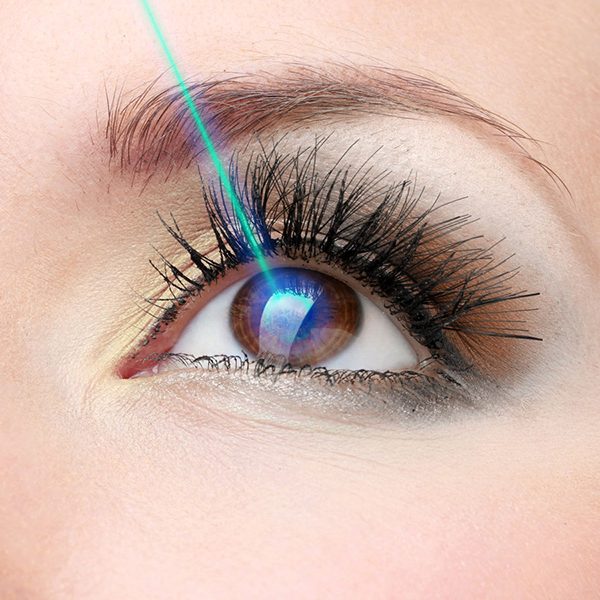Glaucoma
Glaucoma is a group of disorders which damage the optic nerve, the nerve associated with relaying information from the eye to the brain. It usually occurs due to an increase in the pressure of the eye but can sometime occur even with normal pressure. The eye is made up of two chambers; the anterior (the chamber in front) is called the aqueous chamber and the posterior (the one behind) is called the vitreous chamber. The human eye constantly keeps producing a fluid called aqueous humour into the anterior chamber, to increase the pressure of the eye and prevent it from collapsing. This pressure is called intraocular pressure (IOP).
Depending on the nature of increase in the pressure of the eye, glaucoma is broadly classified into two types:
- Open angle glaucoma: Angle here refers to the angle of the drainage canal for the aqueous humor being produced in the eyes. In this type of glaucoma the access to the drain is not blocked but other factors like hereditary causes can increase the pressure in the eye.
- Closed angle glaucoma: As the name suggests the drainage canal angle is narrow and blocks the drainage of the fluid produced. This causes back pressure to build up and cause damage to the optic nerve.
The real danger in open angle glaucoma lies in the fact that it is silent and rarely causes symptoms. This is really perilous as the damage done on the optic nerve is permanent and cannot be reversed. Therefore this disease needs to be caught and managed early. Glaucoma is the second most leading cause of blindness in the developed world!

Possible Symptoms
- Mild eye ache in open type.
- Difficulty in reading and near vision.
- Delayed adaptation of the eyes in the dark.
- Loss of visual field in certain areas called scotoma.
- In closed type severe headache and eye ache can occur in dark or dimly lit conditions (like at a cinema). This is a medical emergency and needs to be treated under emergency basis in a hospital.
- Nausea and vomiting can occur in closed type with headache.
- Colored halos are also associated with closed type of glaucoma.
- Significant loss of vision and blindness occurs in the end stage of the disease.
Diagnosis
Glaucoma is diagnosed by measuring the pressure of the eyes using an instrument called tonometer. In a comprehensive eye exam the doctor will numb your eye with drops and gently probe your eyes to measure the pressure. Normal readings are below 20mmhg (unit of pressure). Any reading above 30mmhg is dangerous and needs further investigation.
While tonometers are used to measure the pressure, sophisticated scans and computerized tests are required to monitor the damage on the retina and the function of the optic nerve. All these will be performed in a comprehensive eye exam.
Treatment
Early interventions are important as the disease can progress to permanent visual loss. Your doctor, after running tests and confirming the diagnosis, might prescribe eye drops to reduce the fluid production in the eye or help aide the drainage of the fluid. Compliance is vitally important as the disease is symptom less and this reduces the motivation of many patients. Your doctor will regularly monitor the disease and in case the drops are not working surgery may be advised to open the drainage canal. Please do make sure to follow your doctor’s advice as the consequences are quite sinister if necessary steps are not taken.




